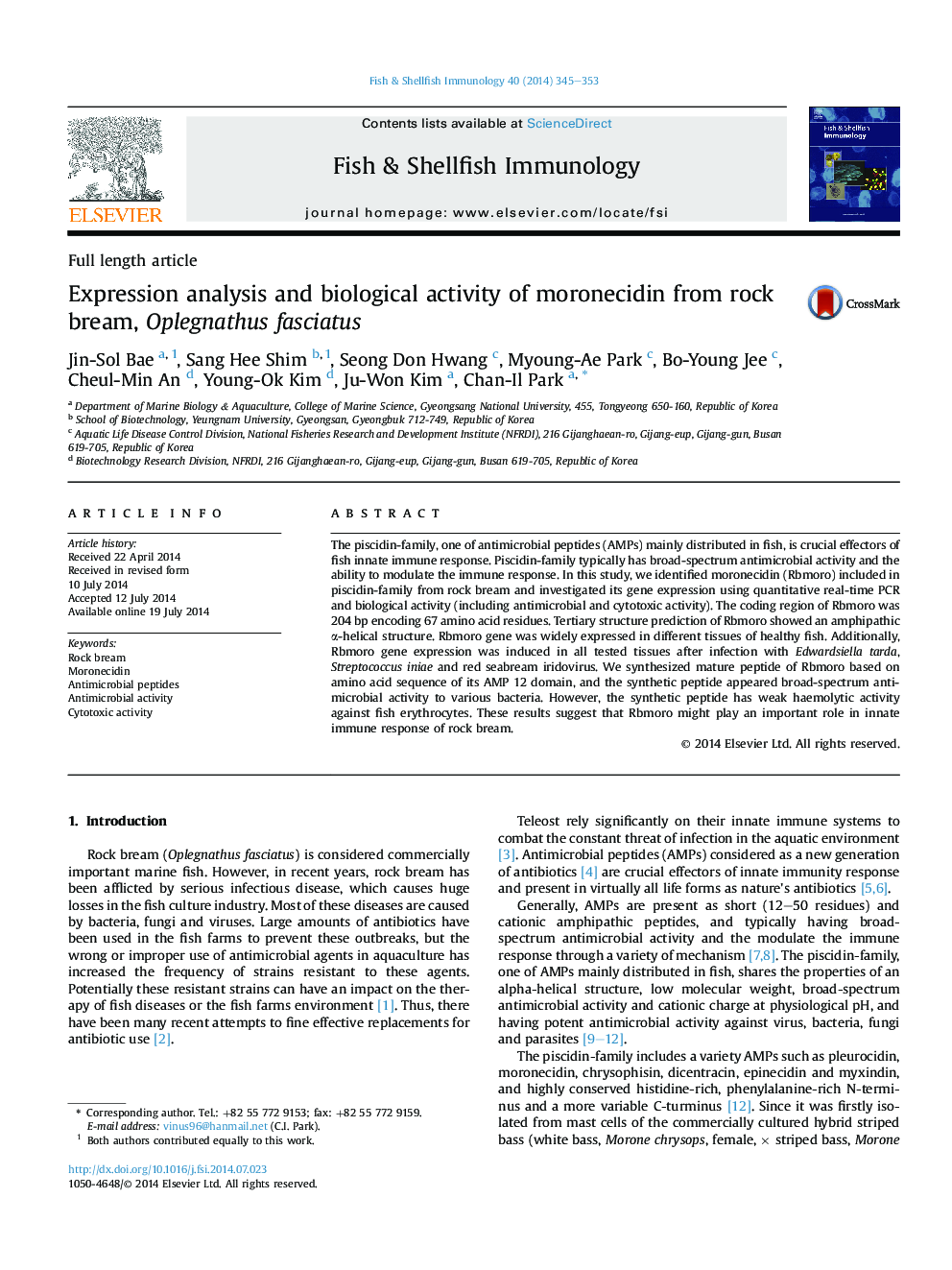| Article ID | Journal | Published Year | Pages | File Type |
|---|---|---|---|---|
| 8499549 | Fish & Shellfish Immunology | 2014 | 9 Pages |
Abstract
The piscidin-family, one of antimicrobial peptides (AMPs) mainly distributed in fish, is crucial effectors of fish innate immune response. Piscidin-family typically has broad-spectrum antimicrobial activity and the ability to modulate the immune response. In this study, we identified moronecidin (Rbmoro) included in piscidin-family from rock bream and investigated its gene expression using quantitative real-time PCR and biological activity (including antimicrobial and cytotoxic activity). The coding region of Rbmoro was 204 bp encoding 67 amino acid residues. Tertiary structure prediction of Rbmoro showed an amphipathic α-helical structure. Rbmoro gene was widely expressed in different tissues of healthy fish. Additionally, Rbmoro gene expression was induced in all tested tissues after infection with Edwardsiella tarda, Streptococcus iniae and red seabream iridovirus. We synthesized mature peptide of Rbmoro based on amino acid sequence of its AMP 12 domain, and the synthetic peptide appeared broad-spectrum antimicrobial activity to various bacteria. However, the synthetic peptide has weak haemolytic activity against fish erythrocytes. These results suggest that Rbmoro might play an important role in innate immune response of rock bream.
Related Topics
Life Sciences
Agricultural and Biological Sciences
Aquatic Science
Authors
Jin-Sol Bae, Sang Hee Shim, Seong Don Hwang, Myoung-Ae Park, Bo-Young Jee, Cheul-Min An, Young-Ok Kim, Ju-Won Kim, Chan-Il Park,
